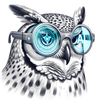NVIDIA Omniverse: Crafting the Metaverse

The emergence of the Metaverse has been a hot topic in the tech world, with big names such as Facebook announcing their plans to evolve into a Metaverse company. Amid this buzz, NVIDIA has unveiled a significant expansion of its NVIDIA Omniverse, the first simulation and collaboration platform capable of forming the foundation of the Metaverse.
What is the Metaverse?
In essence, the Metaverse is a shared, interactive, and immersive virtual 3D world, or perhaps a constellation of such worlds, that fosters collaboration. It's seen in action in online social games like Fortnite, Roblox, and Minecraft. Still, it's also hinted at in remote collaboration tools that connect colleagues globally, especially in these pandemic times. The Metaverse, as envisioned by NVIDIA, is not limited to one application or location. It's a platform where virtual spaces and the identities of those navigating them remain persistent, enabling digital goods and identities to transition between different virtual worlds and even into our world through augmented reality.
NVIDIA's Contribution: Omniverse
NVIDIA Omniverse is essentially a platform designed to connect 3D worlds into a shared virtual universe. It's used across various industries for projects requiring collaboration and the creation of 'digital twins' - simulations of real-world structures and factories. For instance, BMW Group uses Omniverse to create a future factory, a perfect 'digital twin' designed entirely in digital and simulated in NVIDIA Omniverse.
Omniverse has integrated the Universal Scene Description (USD) interchange framework developed by Pixar in 2012, along with technologies for modeling physics, materials, and real-time path tracking. NVIDIA has already developed 12 Omniverse Connectors to major design tools, with another 40 in the pipeline.
Delving Deeper: The Components of Omniverse
Omniverse consists of three main parts:
- Omniverse Nucleus: This is a database engine that connects users and facilitates the interchange of 3D assets and scene descriptions. Once connected, designers engaged in shading, animation, lighting, modeling, layout, and special effects can collaborate to create a scene.
- Composition, Rendering, and Animation Engine: This is the virtual world simulation aspect of Omniverse.
- NVIDIA CloudXR: This includes client and server software for streaming extended reality content from OpenVR applications to Android and Windows devices, enabling users to seamlessly transition into and out of the Omniverse.
Simulation and Training in the Virtual World
The Omniverse is built from the ground up to replicate the real world. It leverages NVIDIA RTX graphics technologies for real-time path tracing, simulating how light rays bounce around a virtual world. It uses NVIDIA PhysX for physics simulation and NVIDIA MDL for material simulation. Furthermore, Omniverse integrates fully with NVIDIA AI, which is crucial for advancing robotics and self-driving vehicles.
One intriguing application of Omniverse is its ability to train robots. By obeying the laws of physics and accurately simulating particles, fluids, materials, and machines, Omniverse provides a virtual world where robots can train. Once trained in the Omniverse, the learned models can be transferred to an NVIDIA Jetson and connected to a real robot, providing a path towards factories run by robots, building robotized vehicles.
To Conclusion
Human beings have been shaping how we perceive the world for millennia through music, art, and literature, creating our own virtual realities. The next step in this evolution adds interactivity and collaboration. Improvements in screens, VR headsets like Oculus Quest, and mixed reality devices such as Microsoft's Hololens are steps towards a fully immersive experience. The Metaverse, with platforms like NVIDIA's Omniverse at its core, is the mechanism through which these experiences can be distributed more evenly across our societies.
As we continue to advance in technology and our understanding of the Metaverse, platforms like NVIDIA's Omniverse will play a crucial role in shaping our shared virtual futures. It's a fascinating time, with digital worlds becoming more intertwined with our physical world, offering unlimited potential for creativity, collaboration, and innovation.
